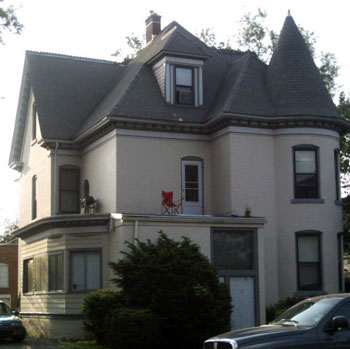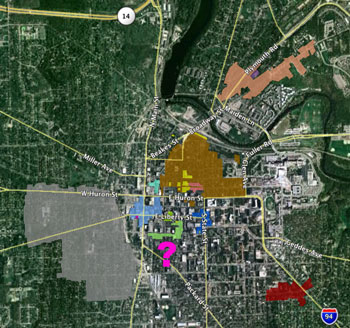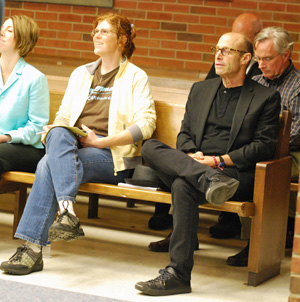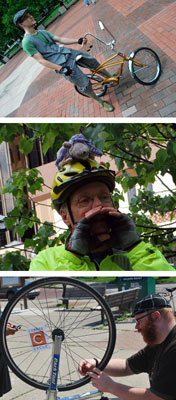In the Archives: The Girl Who Burned
Editor’s note: At its May 20, 2010 meeting, the University of Michigan board of regents approved a $17.7 million expansion of the University Hospital’s emergency department, aimed at reducing overcrowding and patient wait times. In 2009, the hospital’s ER had over 77,000 patient visits. A potential visitor to a UM ER back in the early 1900s would have been Bertha Thorn, the subject of this installment of Laura Bien’s local history column.
The house at 160 North Washington stood dark on the night of December 7, 1908.
The 19-year-old servant girl woke up in her attic room around midnight. She sighed, realizing that she would have to get out of bed and get the chamber pot. It would be cold from the chilly room. Bertha wore a union suit under her nightgown.
She got up and sleepily felt for the kerosene lamp on her bedside table. She lifted the glass chimney and lit the lamp.
The chimney slipped. Bertha grabbed for it. Her nightgown sleeve caught fire.
Bertha jerked back. Her sleeve snagged the lamp. It tumbled and broke on the floor, sending splattered fuel and a column of fire up Bertha’s back. As flames roared up her nightgown, Bertha screamed and ran for the stairs.
“The girl ran shrieking, a pillar of fire, to the hall below,” reported the Dec. 8, 1908 Ypsilanti Daily Press, “where Miss Scovill aroused by her screams overtook her and succeeded with rare presence of mind in wrapping her in a couch throw and extinguished the flames. A physician was summoned and it was found that she was burned from her neck to her feet, the flesh being literally baked on her back, arms, and limbs, although not so severely burned across her chest. The fact that she wore a union suit of heavy underwear made the case more serious as it was almost impossible to remove the garments.” [Full Story]








